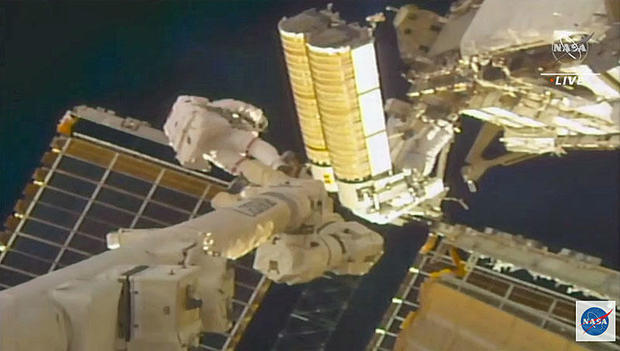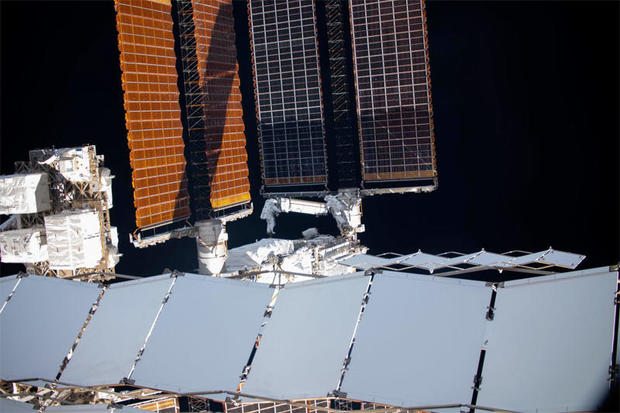17.06.2021
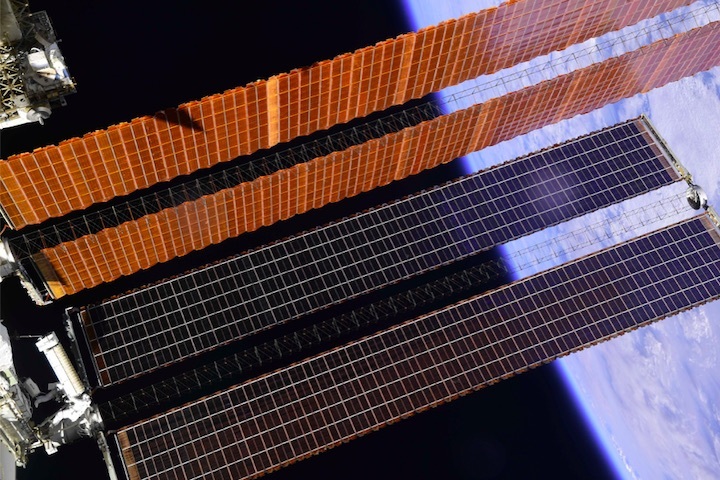
NASA astronaut Shane Kimbrough and ESA (European Space Agency) astronaut Thomas Pesquet concluded their spacewalk at 3:26 p.m. EDT, after 7 hours and 15 minutes. In the seventh spacewalk of the year outside the International Space Station, the two astronauts installed a new ISS Roll-Out Solar Array (iROSA) into its mounting bracket on the far end of the left (port) side of the station’s backbone truss structure (P6).
Kimbrough and Pesquet successfully removed the array from its position in the flight support equipment and maneuvered it into position on the mast canister at the 2B power channel.
Before the new array can be deployed and begin providing power to the orbiting laboratory, spacewalkers will need to install the electrical cables and drive the final two bolts to enable the solar array to unfurl its fully deployed position. Pesquet and Kimbrough are scheduled for another spacewalk coming up on Sunday, June 20 to continue the installation of new solar arrays.
NASA is augmenting six of the eight existing power channels of the space station with new solar arrays to ensure a sufficient power supply is maintained for NASA’s exploration technology demonstrations for Artemis and beyond as well as utilization and commercialization.
This was the seventh spacewalk for Kimbrough, the third for Pesquet, and the third they conducted together. Kimbrough has now spent a total of 46 hours and 15 minutes spacewalking, and Pesquet’s total spacewalking time is 19 hours and 47 minutes.
Space station crew members have conducted 239 spacewalks in support of assembly and maintenance of the orbiting laboratory. Spacewalkers have now spent a total of 62 days, 18 hours, and 28 minutes working outside the station.
In November 2020, the International Space Station surpassed its 20-year milestone of continuous human presence, providing opportunities for unique research and technological demonstrations that help prepare for long-duration missions to the Moon and Mars and also improve life on Earth. In that time, 244 people from 19 countries have visited the orbiting laboratory that has hosted nearly 3,000 research investigations from researchers in 108 countries and areas.
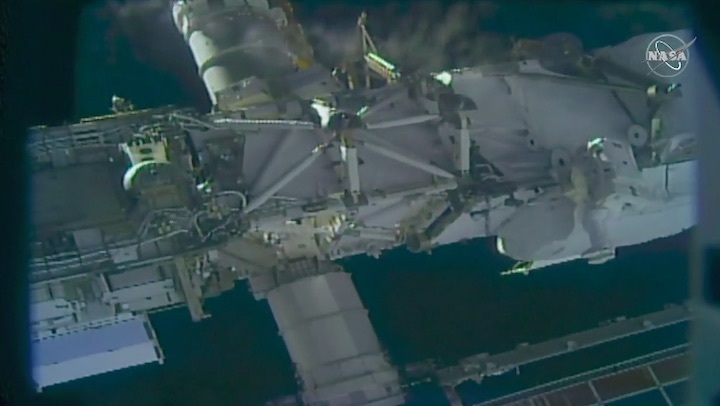
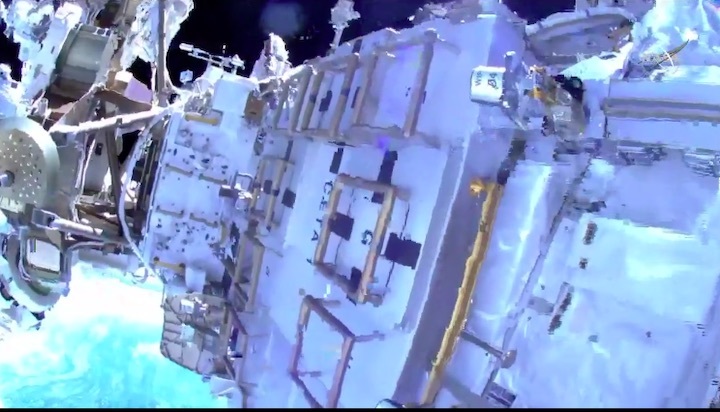
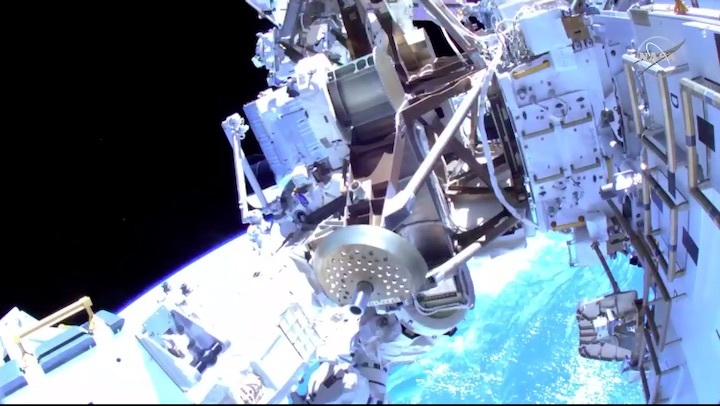
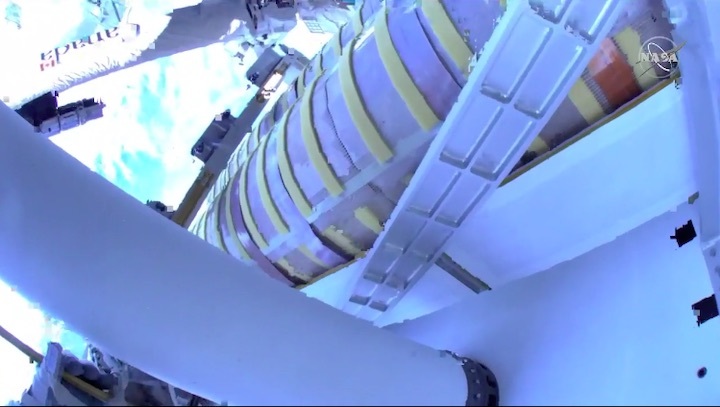
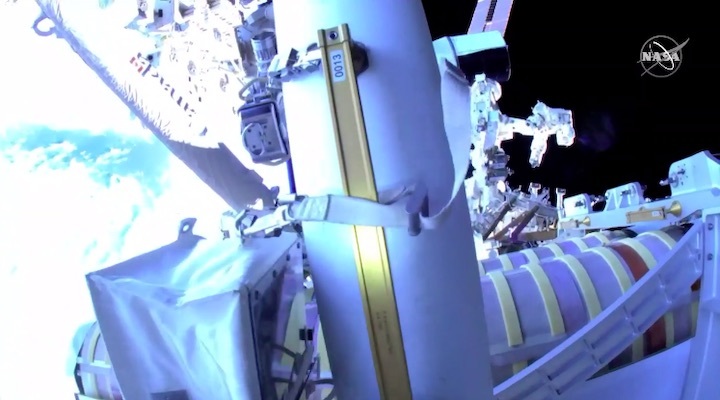
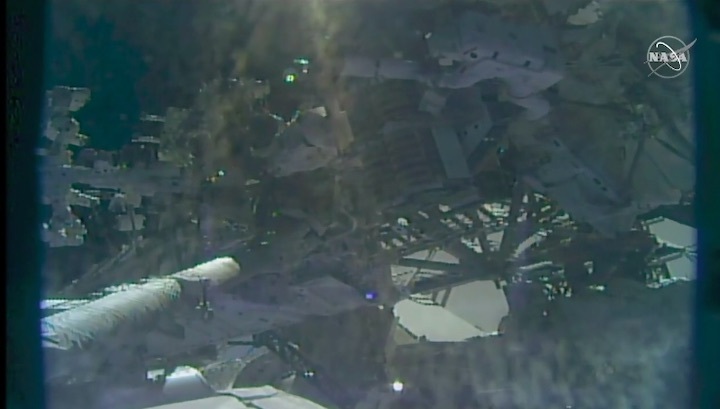
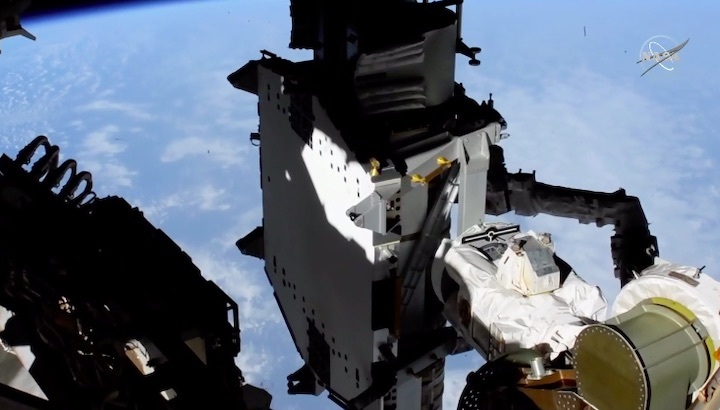
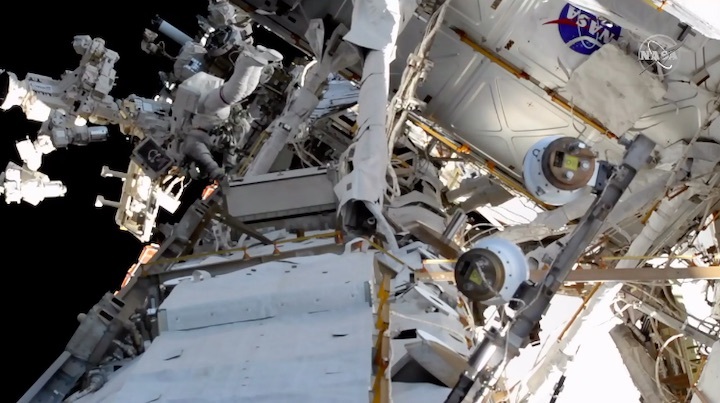
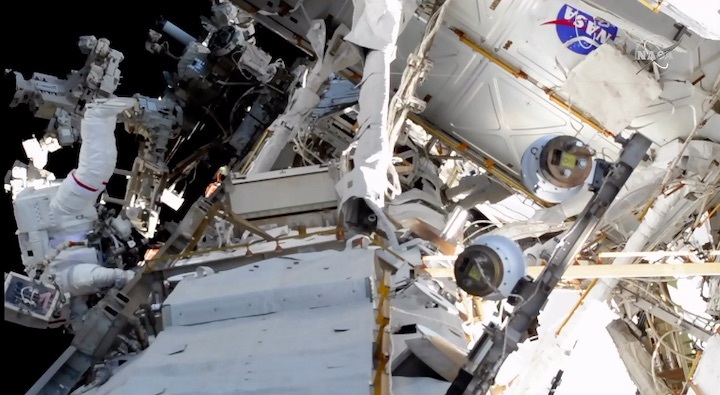
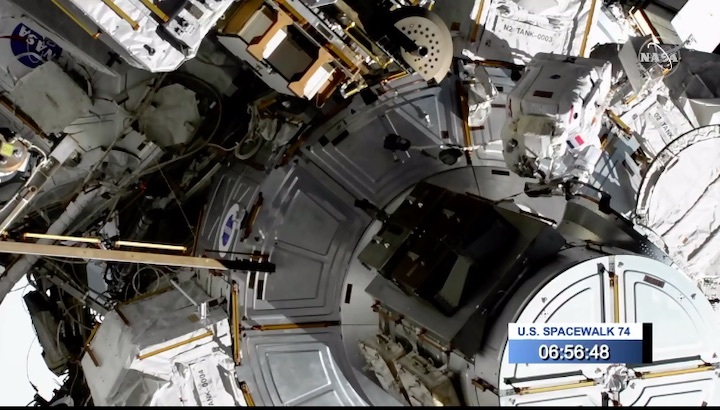
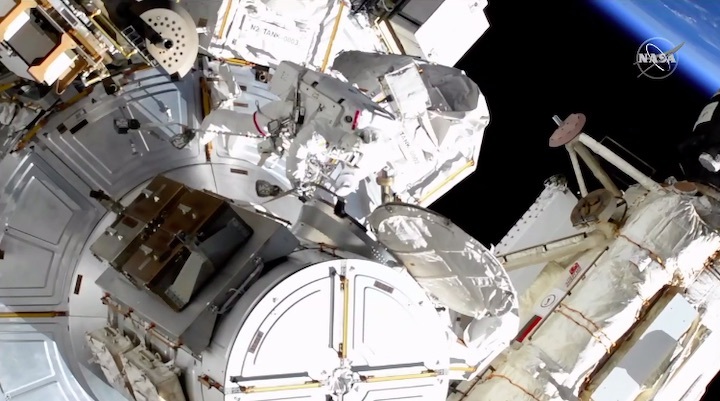
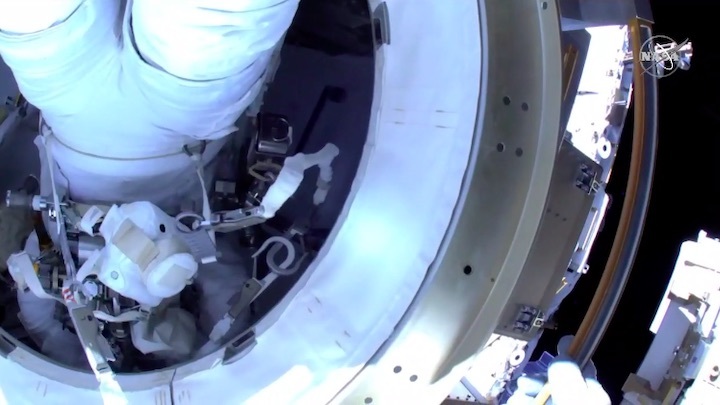
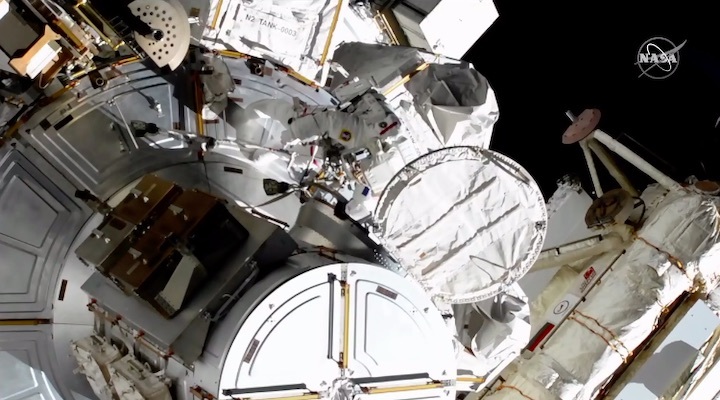
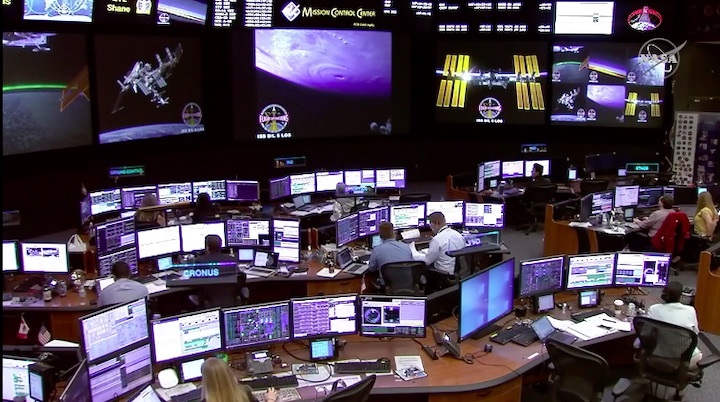
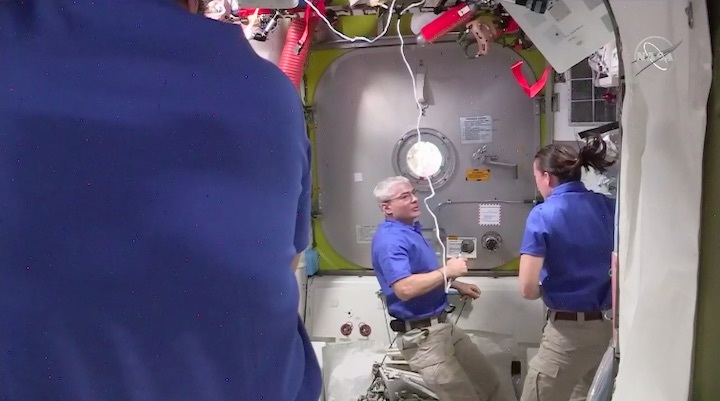
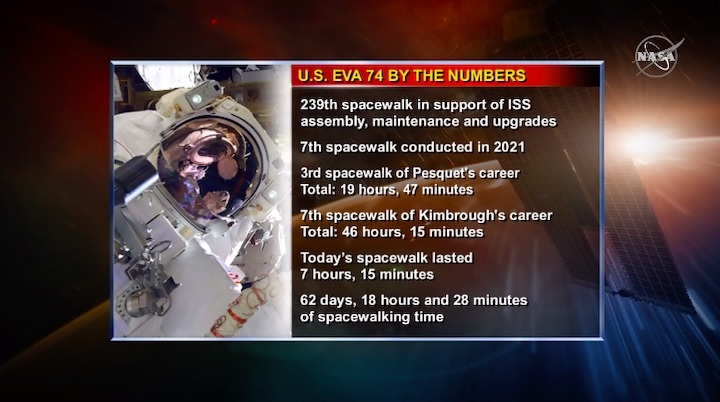
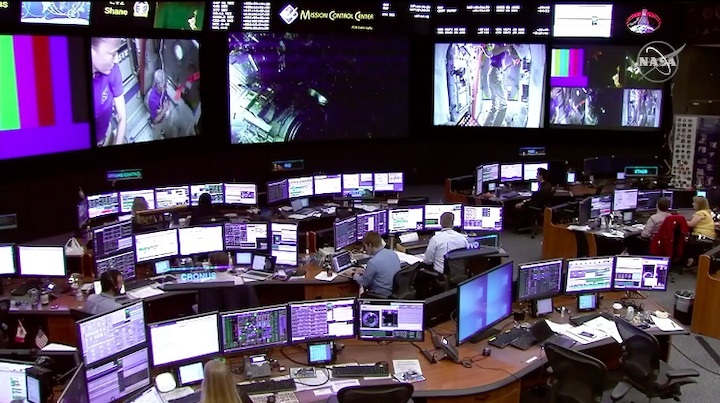
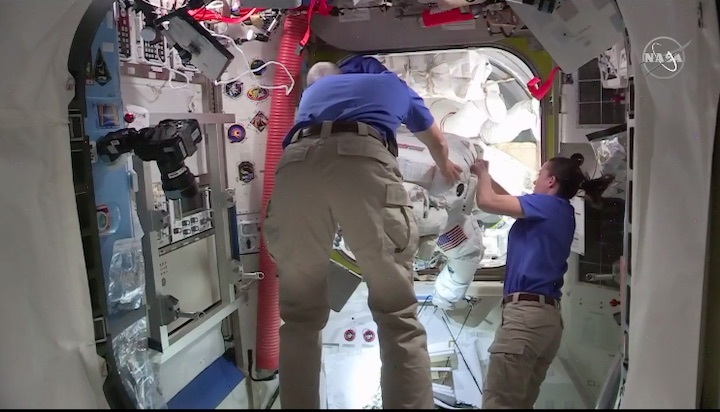
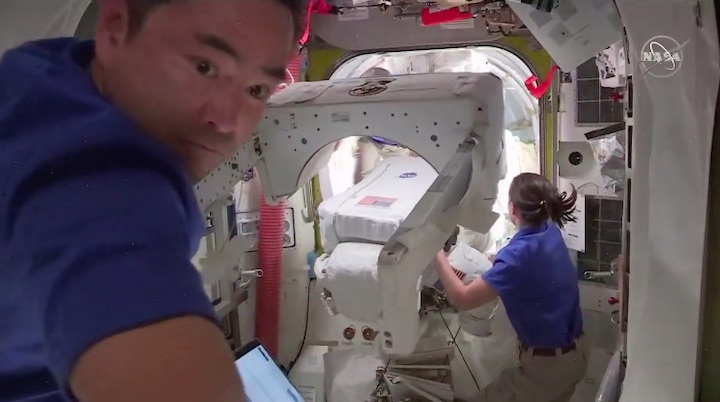
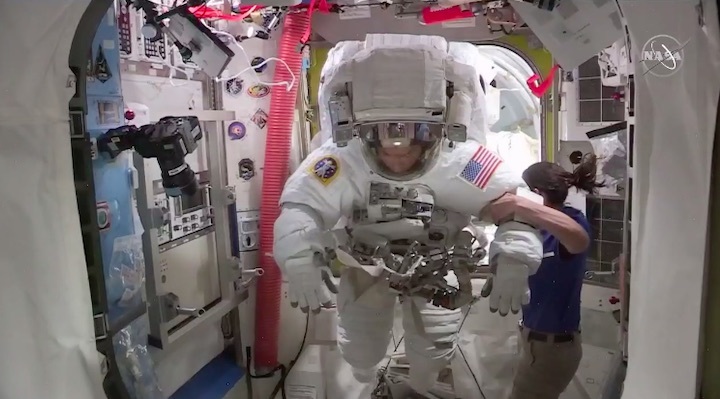
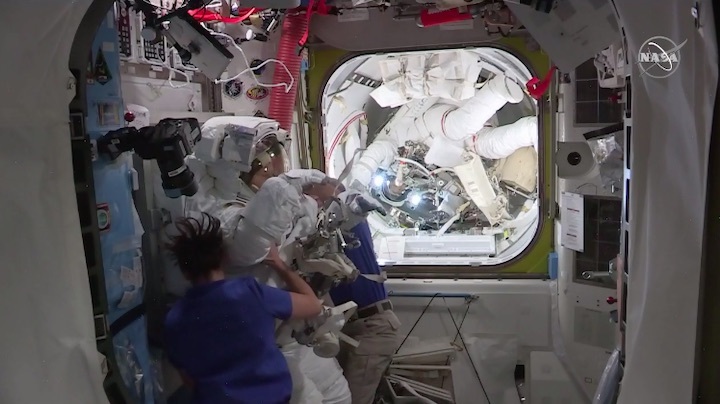
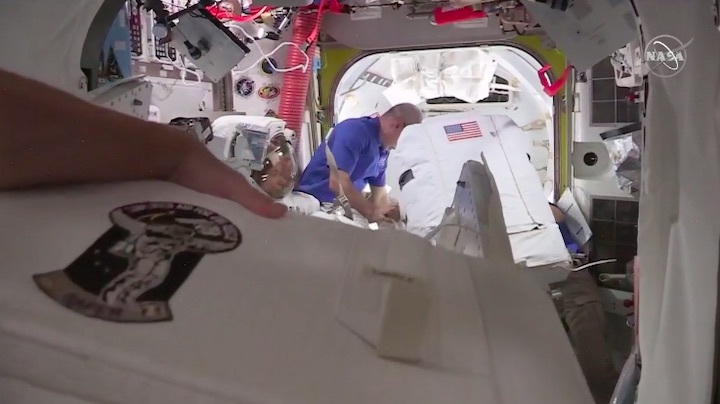
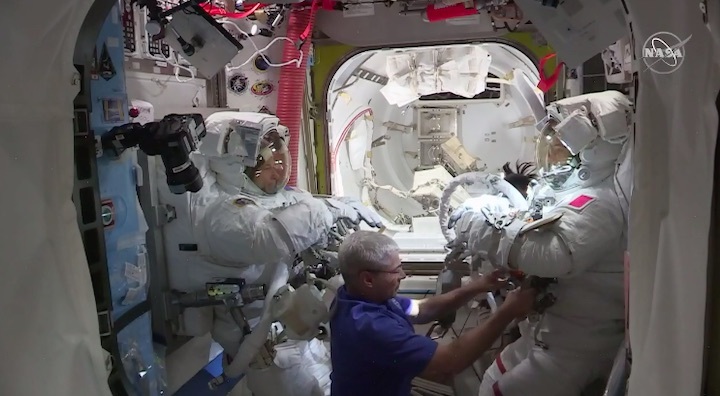
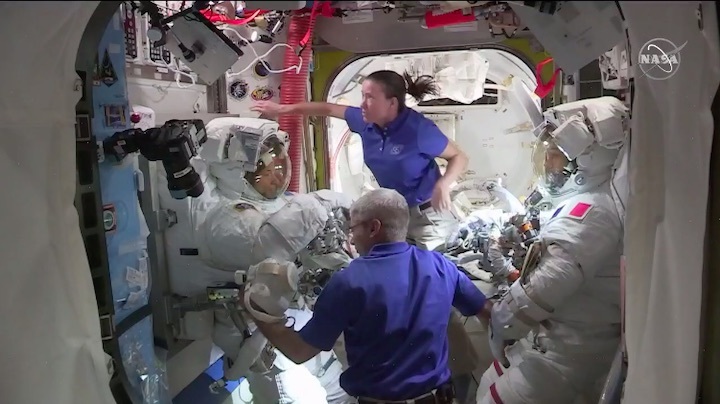
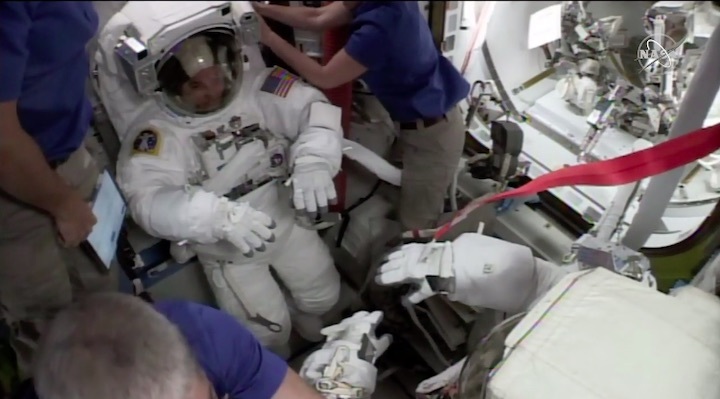
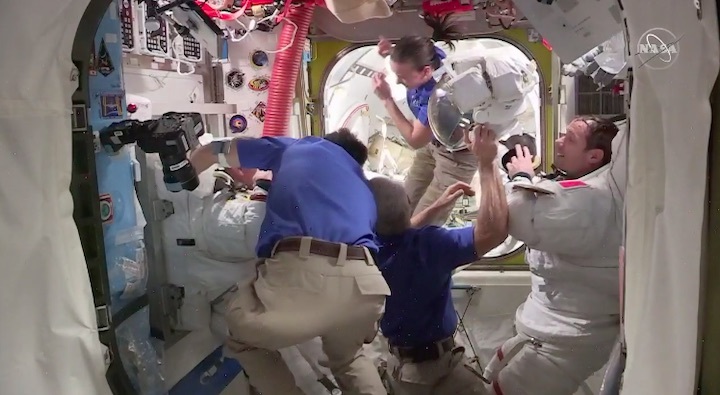
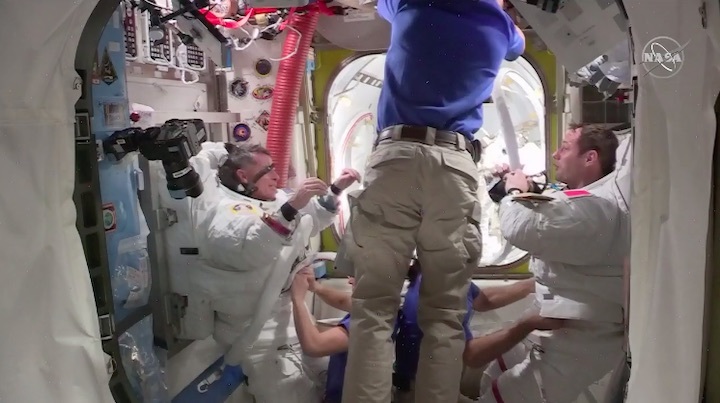
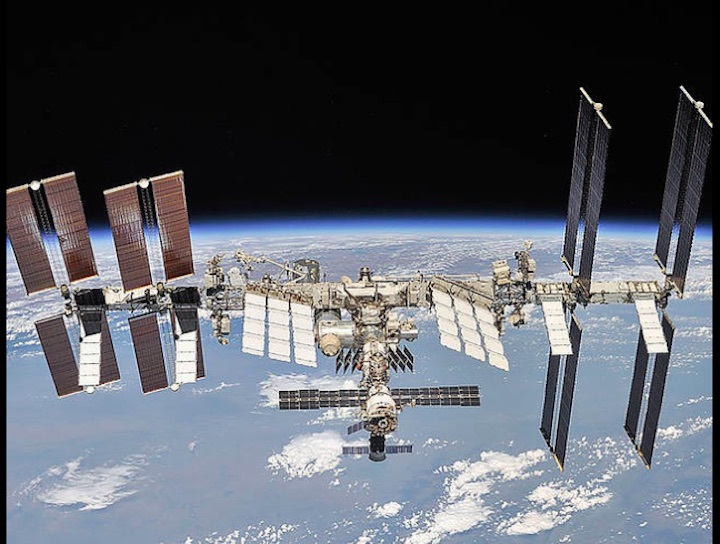
Quelle: NASA TV
----
Update: 22.06.2021
.
Take 2: Spacewalking astronauts install new solar panel
Spacewalking astronauts have installed a powerful new solar panel outside the International Space Station
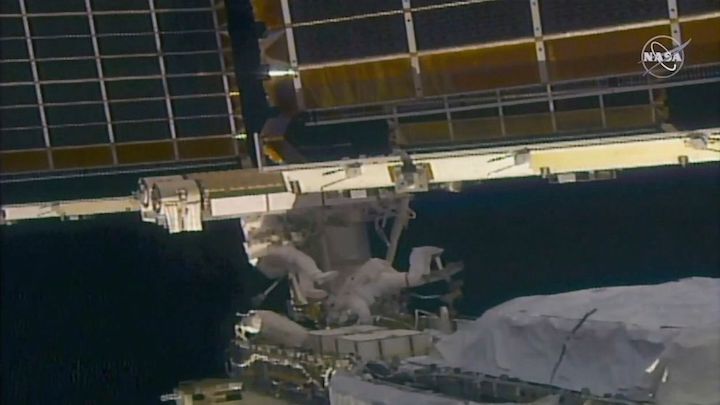
CAPE CANAVERAL, Fla. -- Spacewalking astronauts equipped the International Space Station with the first in a series of powerful new solar panels Sunday, overcoming suit problems and other obstacles with muscle and persistence.
It took two spacewalks for French astronaut Thomas Pesquet and NASA astronaut Shane Kimbrough to install and unfurl the panel to its full 63 feet (19 meters) in length.
The solar wing unrolled like a red carpet once the final set of bolts was released, relying solely on pent-up energy. The slow but steady extension took 10 minutes, with station cameras providing live TV views.
“It is beautiful,” Pesquet called out.
“Well done, both of you,” Mission Control replied once the operation was complete. “That was great to see.”
As the 6 1/2-hour spacewalk concluded, Kimbrough, who has three children, wished “Happy Father's Day” to all the flight controller dads. “Thanks for working with us on a Sunday."
The astronauts started Sunday’s spacewalk picking up where they left off Wednesday, when a string of problems prevented them from unrolling the high-tech solar panel.
“Remember: You are butterflies with biceps today,” astronaut Megan McArthur radioed from inside.
After pushing and tugging, the spacewalkers managed to unfold and align the solar panel so both halves were now end to end, resembling a roll of paper towels. Their shout of “Woo-hoo!" was met with applause in Mission Control.
The two had to wait until they were back on the night side of Earth — and the station's old solar panels were no longer soaking up sunlight and generating power — before making the final power connections. Otherwise, they could be shocked.
While awaiting darkness, the camera-and-light assembly on Kimbrough's helmet came loose, even though he'd switched to a different suit to avoid the trouble he encountered last time. Pesquet did his best to secure it with wire ties, as the minutes ticked by. His effort paid off, and the final step — the actual unfurling — went off without a hitch.
This new solar wing — with five more to come — will give the aging station a much needed electrical boost, as demand for experiments and space tourists grows.
NASA originally allotted two spacewalks for the job — one for each solar panel being installed. But managers added a third spacewalk, given all the earlier problems. Pesquet and Kimbrough will go back out Friday to complete work on the second panel delivered by Space X earlier this month.
This first pair will augment the space station's oldest solar wings, which are degrading after 20 years of continuous operation.
SpaceX will deliver two more pairs over the next year.
Although smaller than the originals, the new solar panels supplied by Boeing can generate considerably more power. The space station needs this reenergizing if NASA hopes to keep the space station running the rest of this decade, with private guests paying millions of dollars to come aboard.
A Russian film crew is scheduled to launch to the orbiting outpost this fall from Kazakhstan, followed by a string of rich businessmen. SpaceX is providing the rides from Cape Canaveral.
On Wednesday, the display control panel on Kimbrough’s suit conked out and he had to return to the air lock to reset it. Then his cooling system registered a momentary pressure spike. Engineers are still evaluating what went wrong.
“Space is hard,” Kimbrough tweeted last week.
Quelle: abcNews
+++
Spacewalkers unfurl first of six new space station solar arrays
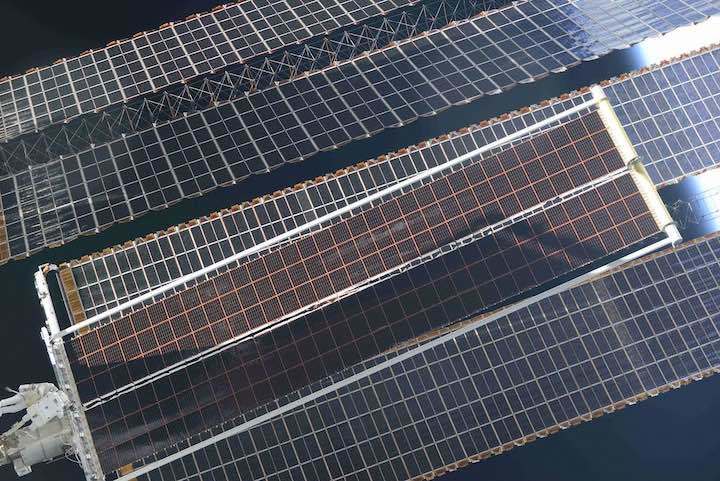
Astronauts Thomas Pesquet and Shane Kimbrough floated outside the International Space Station Sunday to deploy and unroll a new solar array blanket after encountering spacesuit glitches and an interference issue during a previous excursion Wednesday.
Pesquet and Kimbrough switched their spacesuits to battery power at 7:42 a.m. EDT (1142 GMT) Sunday to begin a planned six-and-a-half hour spacewalk.
The astronauts moved from the space station’s Quest airlock to the far port, or left, side of the lab’s solar power truss. Once in place, Pesquet and Kimbrough completed tasks they started during Wednesday’s spacewalk.
The astronauts lost time while ground teams evaluated an issue with the controls and display module on Kimbrough’s suit Wednesday. Then mission control discussed momentary glitch with a sublimator, part of the cooling system on Kimbrough’s suit.
The astronauts continued the spacewalk Wednesday and moved a new ISS Roll-Out Solar Array, or iROSA, unit from a temporary mounting fixture to the far port side of the station’s truss. Once at the P6 solar array work site, the astronauts attached the iROSA to a mounting fixture installed on a preparatory spacewalk earlier this year, then attempted to unfold the unit like a book.
But the astronauts ran into some interference as they tried to unfold the iROSA unit. With Pesquet and Kimbrough already running behind schedule due to the earlier spacesuit issues, mission control called it quits and told the astronauts to head back inside the space station.
The spacewalk Sunday was originally planned to install a second iROSA solar array on the other side of the P6 truss. But after losing time on the previous spacewalk, Pesquet and Kimbrough had to catch up with the work left undone Wednesday.
Kimbrough, a former U.S. Army helicopter pilot, swapped spacesuits for Sunday’s excursion after the troubles with his suit Wednesday.
The International Space Station has eight power channels, each fed with electrical power generated from one solar array wing extending from the station’s truss backbone. The original solar panels launched on four space shuttle missions from 2000 to 2009.
As expected, the solar panel efficiency has degraded over time. NASA is upgrading the space station’s power system with the new roll-out solar arrays, which will partially cover six of the station’s eight original solar panels.
When all six iROSA units are deployed on the station, the power system will be capable of generating 215 kilowatts of electricity to support at least another decade of science operations. The enhancement will also accommodate new commercial modules planned to launch to the space station.

The first pair of iROSA wings will go on the oldest solar panel module — named P6 — on the far left, or port, side of the space station. They launched to the space station on a SpaceX Cargo Dragon capsule earlier this month. The new solar arrays were supplied to NASA by Boeing, Redwire, and a team of subcontractors.
Fully deployed, the roll-out solar arrays stretch 63 feet long and 20 feet wide (19-by-6 meters), about half the length and half the width of the station’s current solar arrays. Despite their smaller size, each of the new arrays will generate about the same amount of electricity as each of the station’s existing solar panels.
A mounting bracket plugs the new arrays into the station’s power channels and rotary joints, which keep the solar wings pointed at the sun as the spacecraft races around Earth at more than 17,000 mph.
Early on in Sunday’s spacewalk, Pesquet and Kimbrough separated the two parts of the iROSA fixture on the 2B power channel at the P6 truss segment. The astronauts drove bolts to secure the array in place, then mated power cables to connect the new array to the space station’s electrical grid.
The cables were mated when the space station was flying over the night side of the Earth, when the old P6 solar array was not generating any power. Then the astronauts released clamps keeping the roll-out solar array spooled in its launch configuration.
Beginning at 11:24 a.m. EDT (1524 GMT), the array gradually unrolled using strain energy in the composite booms supporting the solar blanket. The design of the deployment mechanism eliminates the need for motors to drive the solar array.
The carbon fiber support booms were rolled back against their natural shape for storage during launch.
After about 10 minutes, the iROSA blanket reached its full length of 63 feet.
“Good news, you two,” Canadian astronaut Jenni-Sidey Gibbons radioed the spacewalkers from mission control in Houston. “You can probably can see most of what we can see. We’re tracking a full and good deploy of that solar array, so well done both of you.”
Pesquet then adjusted tensioning bolts to secure the iROSA blanket in place.
The astronauts then headed back in-board on the space station’s truss to prep a second iROSA unit, which Pesquet and Kimbrough will move to the P6 truss segment during a spacewalk tentatively scheduled for Friday, June 25.
The astronauts will connect the second iROSA unit to the 4B power channel on the opposite side of the P6 truss from the blanket they deployed Sunday. If all goes well on Friday’s excursion, they will repeat the steps they accomplished Sunday to unroll the second iROSA blanket.
Quelle: SN
----
Update: 24.06.2021
.
NASA to Air Third Spacewalk to Install New Station Solar Arrays
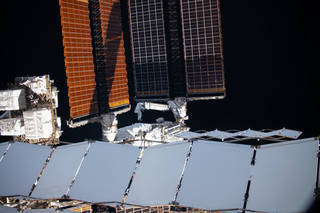
Two astronauts will venture outside the International Space Station Friday, June 25, for a third spacewalk to continue power system upgrades that are already increasing output and proving the technology that will enable NASA’s future Gateway lunar outpost.
Live coverage will begin at 6:30 a.m. EDT on NASA Television, the agency’s website, and the NASA app, with the crew members scheduled to exit the station’s Quest airlock around 8 a.m. The spacewalk will last approximately 6 hours, 30 minutes.
Shane Kimbrough of NASA and Thomas Pesquet of ESA (European Space Agency) will install and deploy the second of six new ISS Roll-Out Solar Arrays (iROSA) on the station’s 4B power channel.
Pesquet will be extravehicular crew member 1 (EV 1), with red stripes on his spacesuit, while Kimbrough will be extravehicular crew member 2 (EV 2), with an unmarked suit. During the spacewalk, Pesquet will secure himself to the end of the station’s robotic Canadarm2 then grasp the iROSA. Operating from inside the station, NASA astronaut Megan McArthur, with NASA astronaut Mark Vande Hei serving as backup, will command the robotic arm to maneuver Pesquet and the array as close as possible to the installation location.
The spacewalk will follow two other recent spacewalks. On June 16, Kimbrough and Pesquet moved the first iROSA to a mounting bracket on the 2B power channel on the port 6 truss, where it was secured in its folded configuration. On June 20, the duo returned to the 2B power channel to complete installation and deployment.
This will be the fifth spacewalk for Kimbrough and Pesquet working together and the ninth spacewalk for Kimbrough and the fifth for Pesquet overall. Kimbrough and Pesquet previously conducted two spacewalks together during Expedition 50 in January and March 2017. It will be the 241st spacewalk in support of station assembly, maintenance, and upgrades.
The current solar arrays are functioning well, but have begun to show signs of degradation, as expected, as they were designed for a 15-year service life. The first pair of the space station’s original solar arrays were deployed in December 2000 and have been powering the station for more than 20 years. The new solar arrays are being positioned in front of six of the current arrays, increasing the station’s total available power from 160 kilowatts to a maximum of 215 kilowatts. The same solar array design will be used to power elements of the agency’s Gateway lunar-orbiting outpost.
In November 2020, the International Space Station surpassed its 20-year milestone of continuous human presence, providing opportunities for unique research and technological demonstrations that help prepare for long-duration missions to the Moon and Mars and also improve life on Earth. In that time, 244 people from 19 countries have visited the orbiting laboratory that has hosted nearly 3,000 research investigations from researchers in 108 countries and areas.
Quelle: NASA
----
Update: 26.06.2021
.
Watch Live: Spacewalk to wrap up second solar array installation at
space station
French astronaut Thomas Pesquet and NASA crewmate Shane Kimbrough floated back outside the International Space Station Friday to install the second of six roll-out solar arrays in a major upgrade to offset age-related degradation in the lab's existing solar wings.
As with all NASA spacewalks, the excursion began when Pesquet and Kimbrough, floating in the station's Quest airlock, switched their spacesuits to battery power at 7:52 a.m. EDT. It is the ninth spacewalk for Kimbrough, the fifth for Pesqut and the 241st in the 23-year history of the space station.
For identification, Pesquet, call sign EV-1, is wearing a suit with red stripes while Kimbrough, EV-2, is wearing an unmarked suit. Both men are equipped with high-definition helmet cameras.
The first two ISS roll-out solar arrays, or iROSAs, were delivered to the lab complex aboard a SpaceX Dragon cargo ship on June 5. The astronauts originally planned to install them in a pair of spacewalks, but it took two outings, one on June 16 and another on June 20, to get the first new array installed.
That panel was mounted on a fixture at the base of an existing solar wing on the far left, port 6 segment of the station's power truss. The P6 truss segment supports two wings, feeding electricity into two of the lab's eight major power circuits: 2B and 4B.
The first iROSA was mounted on a fixture at the base of the P6/2B array, extending out 60 feet and tilted away from the original wing by 10 degrees. The second iROSA will be attached in similar fashion to the P6/4B wing.
As the name suggests, the new panels are designed to deploy from spools, unrolling on their own when tightly wound carbon composite support struts on either side are released.
NASA plans to install iROSA panels on six of the space station's eight original solar wings, all of which have suffered age-related degradation, including rocket plume deposits from visiting cargo and crew ships and impacts from micrometeoroids.
Each new iROSA blanket will generate 20 kilowatts of power and, acting in concert with the original arrays, boost power output back to factory fresh levels.
Pesquet tweeted a time-lapse video of first iROSA installation that was shot by Japanese astronaut Akihiko Hoshide, showing the spacewalkers working in orbital daylight and darkness as the station's other original arrays tracked the sun:
"So the new arrays are installed on top, over in front of the existing solar arrays," said Dana Weigel, deputy manager of the space station program at the Johnson Space Center. "The exposed portion of the old arrays will still be generating power in parallel with the new arrays.
"Those new iROSA arrays have solar cells on them that are more efficient than our original cells, they have a higher energy density, and together in combination, they generate more power than what our original array, when it was new, did on its own."
The six roll-out arrays will generate a combined 120 kilowatts of power. Combined with 95 kilowatts generated by the unshaded portions of the original arrays, the station's total solar power output will reach 215 kilowatts when the upgrade is complete.
Quelle: CBS News


